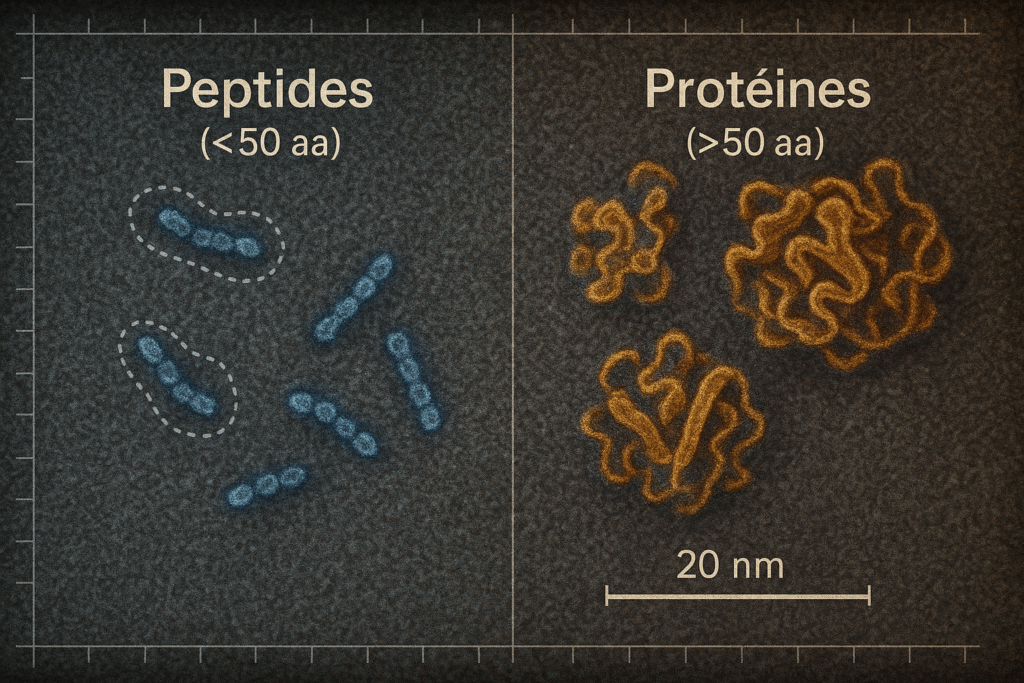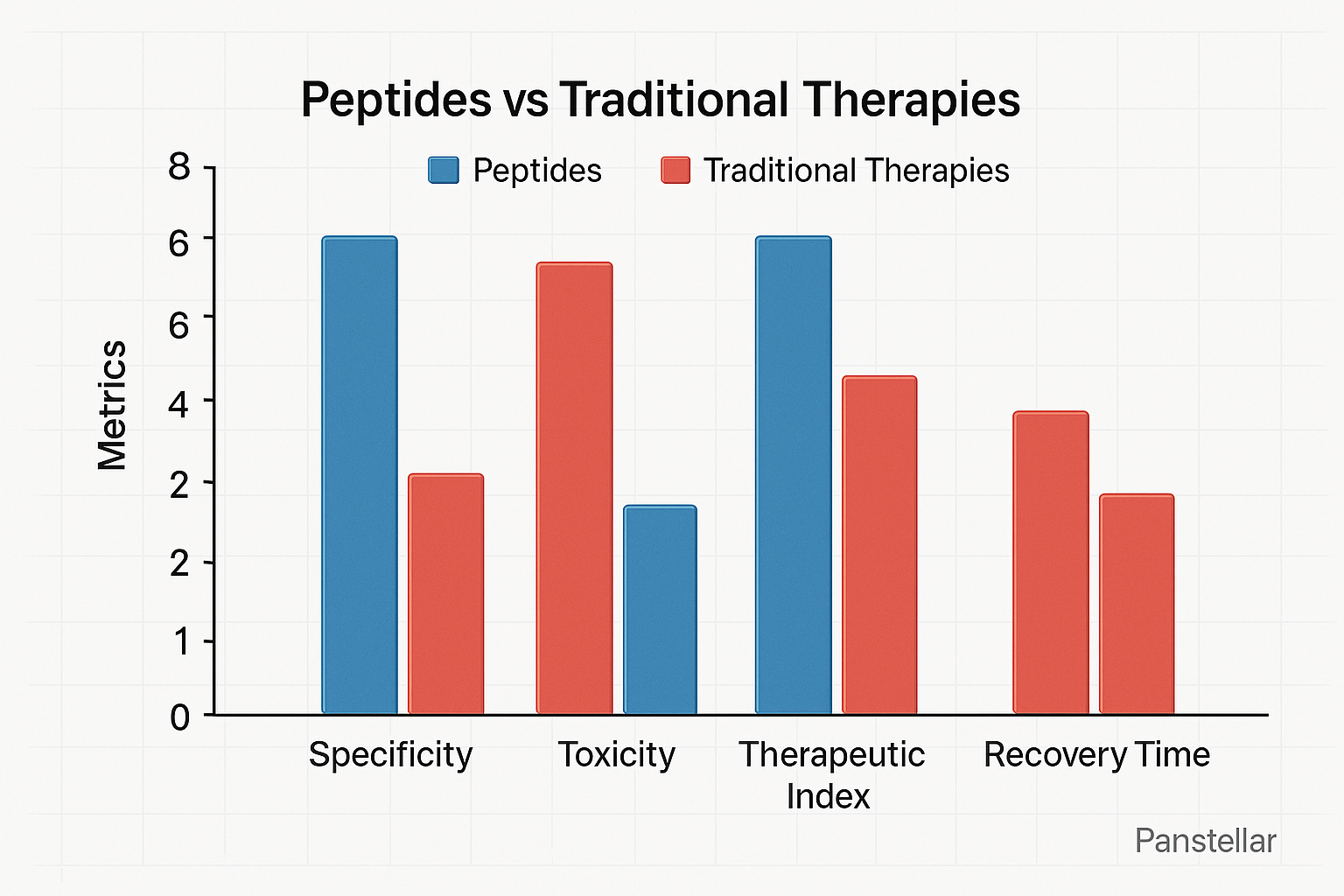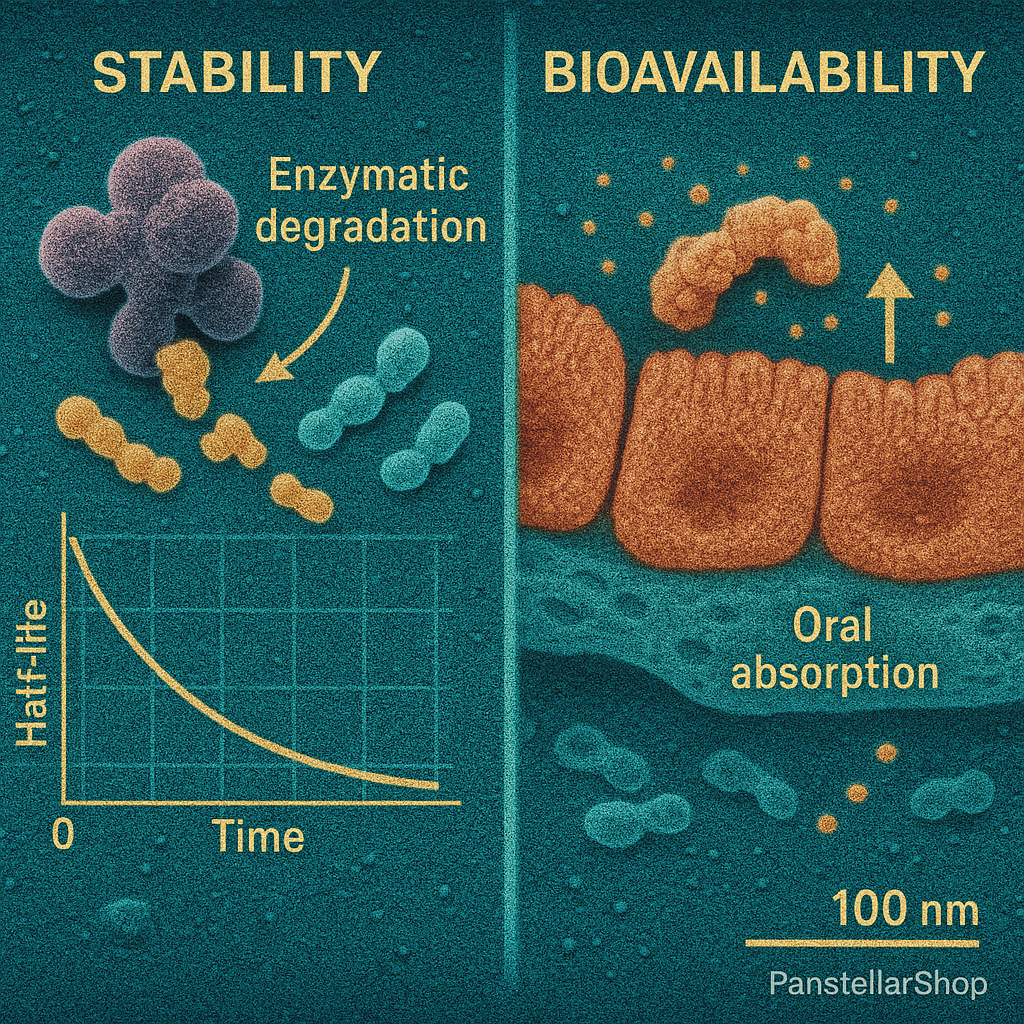Modern medicine continuously evolves, seeking increasingly precise and personalized approaches to treat various conditions. At the heart of this evolution is peptide therapy, an innovative approach gaining popularity in the medical field. But what exactly is this therapy, how does it work, and what benefits can it bring? This article explores in depth the fascinating world of therapeutic peptides.
I- What is Peptide Therapy and How Does It Work?

Therapeutic peptides are short chains of amino acids, typically composed of 2 to 50 units, that act as messengers in our body. Unlike proteins that can contain hundreds of amino acids, peptides are smaller, which gives them unique and advantageous properties in medicine.
Peptide therapy involves administering these specific molecules to influence various biological processes in the body. These peptides can be synthesized in laboratories to mimic peptides naturally present in the human body or be modified to improve their therapeutic efficacy.
The mechanism of action of peptides is relatively simple but remarkably effective: they bind to specific receptors in the body, triggering various physiological responses. This high specificity of peptide action allows them to precisely target certain cells or tissues, significantly reducing side effects compared to other treatments.
II- Medical Applications of Peptide Therapy
One of the most impressive characteristics of peptide therapy is its versatility. The clinical applications of peptides cover a wide range of medical fields, demonstrating their considerable therapeutic potential.
Treatment of Metabolic Diseases
Peptides have played a crucial role in the treatment of metabolic disorders such as diabetes. Insulin, the first therapeutic peptide ever synthesized in 1921, remains an emblematic example of success in this field. Today, GLP-1 (glucagon-like peptide-1) analogs such as liraglutide represent a major advancement in the management of type 2 diabetes and obesity.
Applications in Oncology
Peptide therapy for cancer is emerging as a promising approach. Peptides can be used to specifically target cancer cells, delivering therapeutic agents directly to tumors while sparing healthy tissues. This precision in cancer treatment represents a considerable advantage over conventional chemotherapies.
Regenerative Medicine and Anti-aging
In the field of regenerative medicine, certain bioactive peptides stimulate the production of collagen and elastin, helping to improve skin elasticity and hydration. Other peptides promote wound healing and tissue repair, offering interesting perspectives for the treatment of chronic wounds.
Neurology and Cognitive Health
Peptides crossing the blood-brain barrier can influence brain functions. Research suggests that certain peptides could play a role in neural protection and improvement of cognitive functions, opening new pathways for the treatment of neurodegenerative diseases like Alzheimer’s.
III- Advantages of Peptide Therapy

Peptide therapy presents several notable advantages that explain the growing interest it generates in the medical and scientific community.
A- Superior Specificity and Efficacy
Peptides exhibit high target specificity, allowing them to bind precisely to their target receptors. This specificity translates into increased therapeutic efficacy and a significant reduction in undesirable side effects.
B- Enhanced Safety and Tolerance
Unlike many conventional drugs, peptides are generally well tolerated by the body. When degraded, they produce amino acids that the body can easily recycle, thus reducing the risk of toxicity.
C- Versatility and Personalization
Personalized peptide therapy represents one of the most promising aspects of this approach. Peptides can be designed and modified to meet specific therapeutic needs, paving the way for truly personalized medicine.
IV- Current Challenges and Limitations
Despite its many advantages, peptide therapy faces several challenges that still limit its widespread application.

A- Stability and Bioavailability
Peptides are naturally unstable in the body, being rapidly degraded by enzymes. This enzymatic degradation of peptides constitutes a major obstacle to their therapeutic efficacy. Moreover, their oral absorption is often limited, generally requiring administration by injection.
B- Production Costs
The synthesis of therapeutic peptides remains relatively expensive compared to conventional drugs, although technological advances are gradually contributing to reducing these costs.
C- Regulation and Approval
The regulatory framework surrounding peptide therapies continues to evolve. Approval processes can be complex and lengthy, slowing patient access to these innovative treatments.
V- Recent Advances in Peptide Research
Research on therapeutic peptides is experiencing remarkable acceleration, with significant advances in several key areas.
A- Innovative Chemical Modifications
Researchers are constantly developing new peptide modification techniques to improve the stability and bioavailability of peptides. Cyclization, PEGylation, and the incorporation of non-natural amino acids are among the most promising approaches.
B- Advanced Delivery Systems
The development of new administration systems aims to overcome the bioavailability limitations of peptides. Technologies such as liposomes, hydrogels, and micelles allow for controlled and targeted release of therapeutic peptides.
C- Artificial Intelligence and Peptide Design
The use of artificial intelligence for rational peptide design represents a major advancement. These computational tools allow for predicting the structure, stability, and biological activity of peptides, considerably accelerating the process of discovering new therapeutic agents.
VI- The Future of Peptide Therapy
The future of peptide therapy looks promising, with considerable potential for expansion in various therapeutic domains.
A- Personalized Medicine
The ability of peptides to be adapted to the specific needs of patients opens the way to truly personalized medicine. In the future, we could see tailored peptide treatments based on the unique genetic and metabolic profile of each patient.
B- Combination with Other Therapies
The integration of peptide therapy with other therapeutic approaches, such as immunotherapy or gene therapy, could offer synergistic solutions for complex medical conditions.
C- Expansion of Therapeutic Applications
With more than 200 peptides in clinical development and 600 others in preclinical phase, we can expect to see new therapeutic applications emerge in fields as varied as infectious diseases, autoimmune disorders, and cardiovascular diseases.
Conclusion
Peptide therapy represents an exciting frontier in the medical field, offering a more targeted, effective, and personalized approach to treating various conditions. Although challenges remain, continuous advances in peptide research and development promise to revolutionize our approach to disease treatment.
As we enter a new era of precision medicine, therapeutic peptides position themselves as key players, offering an optimal balance between the efficacy of large biological molecules and the practicality of small drug molecules. The future of peptide therapy looks bright, with unlimited potential for improving human health and well-being.
References
Medical News Today. (2024). Peptides: What are they, uses, and side effects. https://www.medicalnewstoday.com/articles/326701
Nature. (2024). Advance in peptide-based drug development: delivery platforms, therapeutics and vaccines. Signal Transduction and Targeted Therapy. https://www.nature.com/articles/s41392-024-02107-5
Nature. (2022). Therapeutic peptides: current applications and future directions. Signal Transduction and Targeted Therapy. https://www.nature.com/articles/s41392-022-00904-4
ScienceDirect. (2024). Peptide therapeutics: current status and future directions. https://www.sciencedirect.com/science/article/pii/S1359644614003997
PubMed Central. (2024). Recent Advances in the Development of Therapeutic Peptides. https://pmc.ncbi.nlm.nih.gov/articles/PMC10330351/
PubMed Central. (2023). Peptides as Therapeutic Agents: Challenges and Opportunities in the Green Transition Era. https://pmc.ncbi.nlm.nih.gov/articles/PMC10609221/
News Medical. (2025). Peptide Therapy: The Future of Targeted Treatment? https://www.news-medical.net/health/Peptide-Therapy-The-Future-of-Targeted-Treatment.aspx
Medicinal Chemistry Research. (2024). Peptide-based therapeutics: challenges and solutions. https://link.springer.com/article/10.1007/s00044-024-03269-1